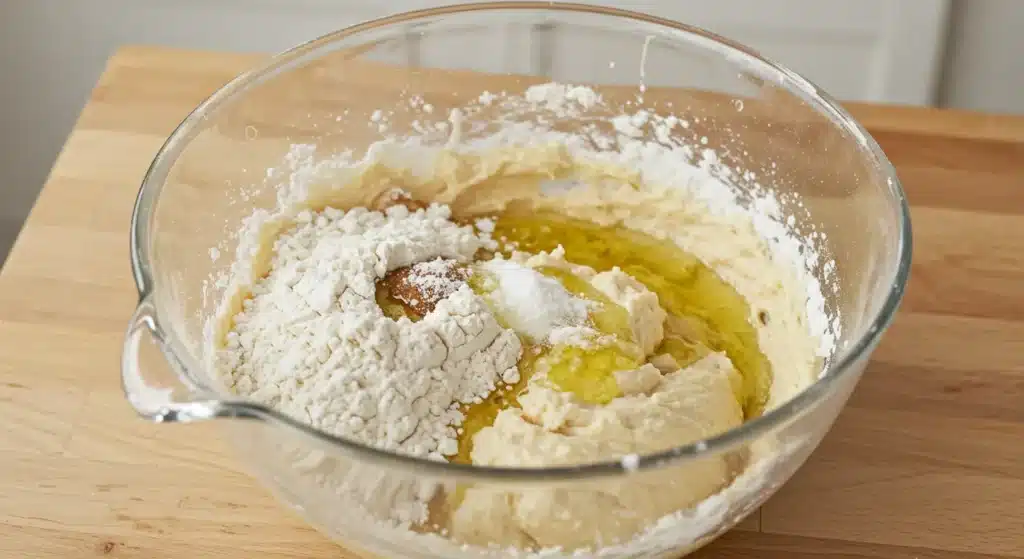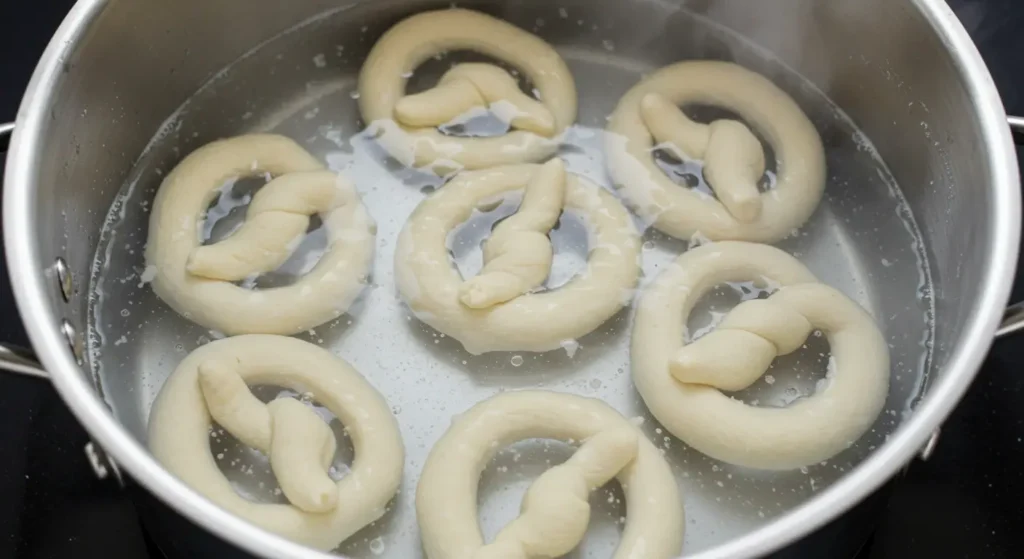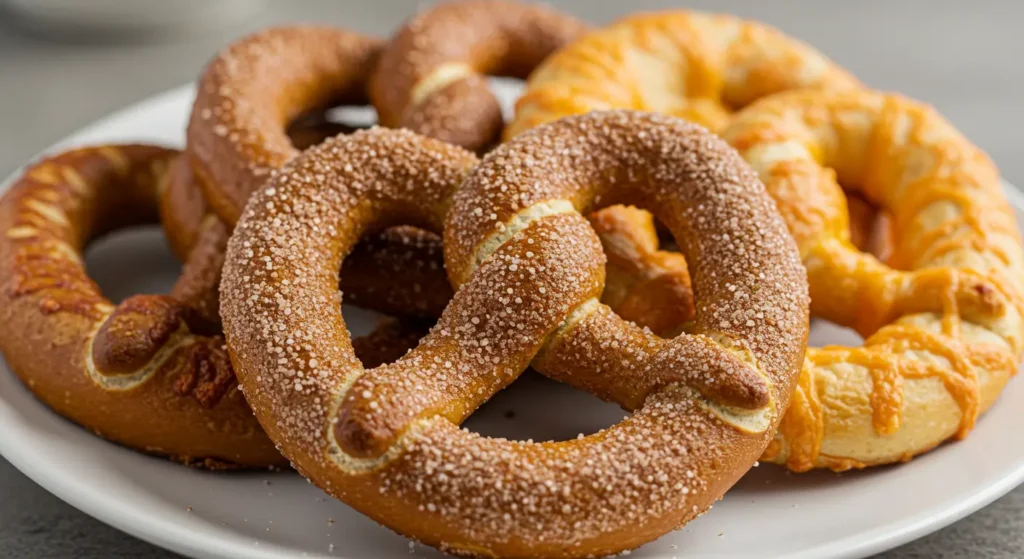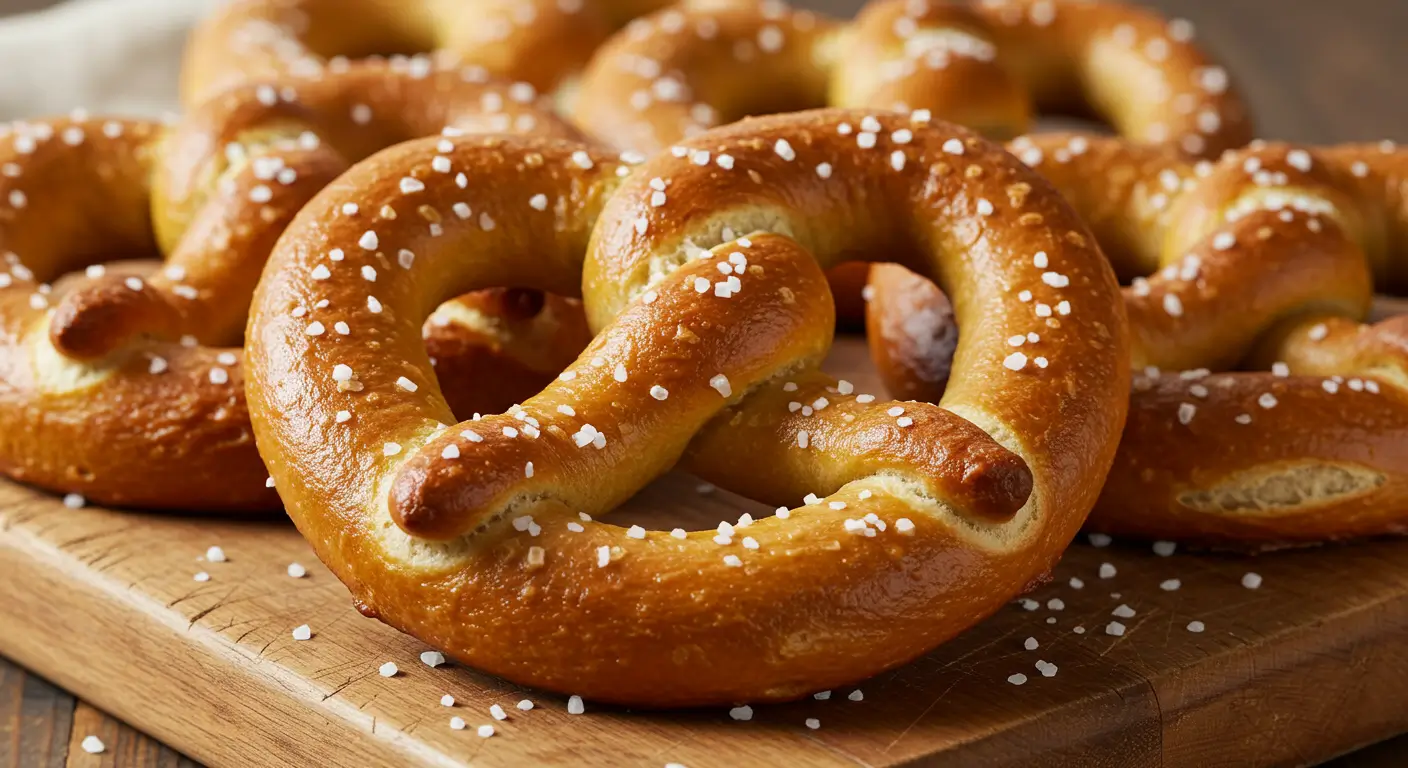Gluten Free Soft Pretzels: The Ultimate Guide to Making and Enjoying Them at Home
If you’ve ever craved that warm, chewy, golden crust of a soft pretzel—only to be stopped short by gluten—this guide is for you. Gluten free soft pretzels are no longer a dream. With the right ingredients and methods, you can enjoy these twisted snacks without the wheat.
In this article, you’ll learn exactly what goes into making the best gluten free soft pretzels. We’ll walk through ingredient choices, expert baking tips, and even answer the most popular questions about gluten free options from major brands like Trader Joe’s and Aldi.
Discover great ideas like our easy guide to gluten-free sourdough bread and check out this gluten free cereal guide for more GF pantry picks.
Let’s get twisting!
Table of Contents
Understanding Gluten Free Soft Pretzels
What Makes Pretzels Soft and Gluten-Free?
Soft pretzels are famous for their tender bite and rich, slightly chewy crust. But making that texture gluten-free is a science. The softness typically comes from high-protein flour, warm water, and a touch of sugar. Gluten provides stretch and elasticity, but in a gluten free version, we use substitutes like rice flour, tapioca starch, or almond flour.
These alternatives mimic gluten’s texture without causing inflammation or reactions in those with celiac disease or gluten sensitivity.
A brief boil in baking soda water also plays a key role. This step gives pretzels their distinctive chew and deep brown shine—even without wheat flour.
Why Go Gluten-Free? Health and Dietary Considerations
For people with celiac disease, gluten isn’t just uncomfortable—it’s dangerous. Even small amounts can cause serious symptoms. Others opt for gluten-free living to reduce bloating, manage autoimmune conditions, or follow a cleaner diet.
Gluten free soft pretzels offer all the satisfaction of the classic without the health risks. They’re also a perfect snack if you’re experimenting with allergy-friendly or anti-inflammatory meal plans.
Check out pillsbury gluten-free flour options that work well in soft pretzel recipes.
For more tasty gluten free indulgence, don’t miss our gluten free king cake that’s perfect for any celebration.
Ingredients That Make a Difference
Best Gluten-Free Flours for Soft Pretzels
The key to perfect gluten free soft pretzels starts with the flour. Unlike traditional dough, you can’t rely on wheat for elasticity or texture. Instead, choose flour blends that offer structure and chew.
Popular options include:
- Brown rice flour – mild flavor, great structure.
- Tapioca starch – adds stretch and chew.
- Almond flour – nutty taste and healthy fats.
- Sorghum flour – soft texture and whole-grain benefits.
For best results, use a pre-mixed gluten free flour blend labeled for baking. These often contain xanthan gum or guar gum, which helps bind the dough and mimic gluten’s elasticity.
You can also make your own blend by combining these flours with binding agents and starches.
Looking for inspiration? Try our gluten-free soft pretzels recipe made with a well-balanced flour mix.
Secret Add-ins for Flavor and Texture
Beyond flour, flavor boosters make a big difference. Salt is a must, both in the dough and on top. Sea salt or pretzel salt adds crunch and punch.
Honey or maple syrup gives a hint of sweetness that balances the salty crust. Apple cider vinegar helps activate baking soda and improves the dough’s rise.
Another insider tip? Add a bit of Greek yogurt or sour cream (dairy-free if needed) for moisture and tenderness.
Want to go all-in on gluten-free pantry essentials? Don’t miss our gluten-free popcorn guide for more snack ideas.
How to Make Gluten Free Soft Pretzels at Home
Step-by-Step Recipe Breakdown

Making gluten free soft pretzels from scratch is easier than you think. Here’s a foolproof method anyone can follow.
Step 1: Mix the Dough
In a bowl, combine 2 cups of gluten free flour blend, 1 tablespoon sugar, 1 ½ teaspoons baking powder, and ½ teaspoon salt. Add 1 tablespoon apple cider vinegar and 1 cup warm water. Stir to form a soft dough.
Step 2: Knead and Rest
Lightly knead the dough until smooth. Let it rest for 10 minutes to hydrate the flours and help with shaping.
Step 3: Shape the Pretzels
Divide the dough into 6 balls. Roll each into a rope, then twist into a pretzel shape. Don’t worry if they aren’t perfect—the flavor will be.
Step 4: Boil in Baking Soda Water
Bring 6 cups of water and ¼ cup baking soda to a boil. Drop each pretzel in for 30 seconds. This step creates that golden brown crust.
Step 5: Bake Until Golden
Place boiled pretzels on a parchment-lined baking sheet. Brush with egg wash or melted butter (use dairy-free if needed). Sprinkle with coarse salt. Bake at 425°F for 12–15 minutes.
Check out this post on delicious gluten-free bagels if you love chewy breads without wheat.
Pro Tips for the Perfect Dough Consistency
Gluten free dough can be sticky. Use lightly oiled hands and parchment paper to avoid frustration.
Avoid over-mixing. Gluten free flours don’t need intense kneading like wheat-based dough.
Humidity matters. If the dough feels dry, add 1 tablespoon of warm water at a time.
Want more gluten-free baking ideas? Discover great ideas like our gluten-free brioche bread for buttery, pillowy texture.
Baking vs Boiling: The Traditional Pretzel Debate
Which Method Works Best for Gluten-Free Dough?
Classic soft pretzels are boiled before baking. That quick dip in baking soda water gives them their chewy crust and deep golden color.
But with gluten free dough, things get tricky. It’s softer, less elastic, and sometimes too delicate for boiling.
Still, the boil makes a huge difference. It adds that signature pretzel bite and helps the salt stick.
To make it work, keep the boil short—no more than 30 seconds. Use a slotted spoon to handle them gently.
Some bakers skip boiling altogether. Instead, they brush the dough with baking soda and water mix before baking.
This shortcut works but delivers a lighter crust. If you want that bakery-style snap, go for the real boil.

Texture and Taste Differences Explained
Boiled pretzels have a glossy shell and chewy center. They’re closer to the traditional taste we all crave.
Baked-only pretzels turn out softer, more like a roll. They’re great if you prefer a milder crust and tender bite.
Flavor-wise, both can shine. The real difference comes down to texture and visual appeal.
Try both methods and see what you love. Either way, you’ll get a tasty, gluten free snack.
For more delicious textures, learn more about gluten free sourdough bread and its chewy crumb.
Tools and Equipment for Pretzel Perfection
Kitchen Gear You’ll Need
Making gluten free soft pretzels at home doesn’t require fancy tools, but a few key items make things easier. Start with a mixing bowl large enough for your dough to expand. You’ll also need a rubber spatula or wooden spoon—gluten free dough is sticky, so avoid metal that might tear the texture.
A kitchen scale helps you measure flour accurately, which is vital in gluten free baking. Even small errors can throw off the dough’s balance. If you don’t have one, scoop your flour gently and level it off.
To shape your pretzels, a clean surface or parchment paper works best. Lightly oil your hands and surface to keep the dough from sticking. A slotted spoon or spatula is needed for lifting pretzels out of the boiling water without tearing them.
Lastly, get a baking sheet lined with parchment paper, and if you want that glossy finish, keep a pastry brush handy for egg wash or vegan butter glaze.
Baking Sheets, Parchment, and Pretzel Salt Options
Choose a heavy-duty non-stick baking sheet for even browning. Lining it with parchment prevents sticking and makes cleanup quick. Avoid wax paper—it can’t handle high oven heat.
For the finishing touch, you’ll need pretzel salt. Unlike table salt, this coarse variety stays intact and gives pretzels their signature crunch. If you can’t find pretzel salt, use coarse kosher salt as a substitute.
Want a slightly sweet finish instead? Swap the salt for a dusting of cinnamon sugar after baking. Just brush with melted butter, then sprinkle.
For more gluten free baking help, check out our pillsbury gluten-free flour guide to pick the right mix for your kitchen.
Creative Gluten-Free Pretzel Variations
Cinnamon Sugar, Jalapeño Cheese & More
Gluten free soft pretzels don’t have to be plain. One of the best things about making them at home is the freedom to experiment with flavors.
For something sweet, try a cinnamon sugar twist. Brush your baked pretzels with melted butter, then roll them in a mix of sugar and cinnamon. They’re perfect for dessert or a midday snack.
Prefer a savory bite? Add shredded sharp cheddar or mozzarella into the dough. You can even press diced jalapeños on top before baking for a spicy kick.
Garlic butter is another crowd-pleaser. Mix melted butter with minced garlic and parsley, then brush it on just after baking. It adds bold flavor without overpowering the dough.
For dipping, keep it fun. Pair sweet pretzels with vanilla glaze or chocolate sauce. Serve savory ones with mustard, cheese dip, or even marinara.

Making Pretzel Bites, Sticks, and Stuffed Versions
The classic twisted shape is great—but there’s more you can do. Pretzel bites are easy to make and perfect for sharing. Just roll your dough into ropes and cut into one-inch pieces before boiling and baking.
Want something different? Make pretzel sticks for dipping or even braid your dough for a soft, pull-apart style.
You can also try stuffed pretzels. Fill the dough with dairy-free cream cheese, nut butter, or chocolate spread before sealing and shaping. Bake as usual, and you’ve got a pretzel with a surprise inside.
Don’t miss our gluten-free soft pretzels recipe if you want to explore more twists on the classic.
Where to Buy the Best Gluten Free Soft Pretzels
Popular Brands That Sell Gluten-Free Soft Pretzels
Sometimes, you just want a ready-made treat. Thankfully, several brands offer gluten free soft pretzels you can find in stores or online.
Katz Gluten Free is a top choice. Their soft pretzels are freezer-ready, easy to heat, and have a chewy texture that rivals traditional ones.
Quinn Snacks focuses more on pretzel sticks, but they’re made from whole grain sorghum and sunflower oil, keeping them allergen-friendly.
From The Ground Up makes cauliflower-based soft pretzels for a low-carb, grain-free twist. They’re not traditional but great for variety.
You’ll also find gluten free pretzels in stores like Whole Foods, Sprouts, and Walmart. Some local bakeries even carry fresh options—just check the ingredients carefully.
Always double-check for third-party gluten free certification on the label. This ensures there’s no cross-contamination in production.
Online and In-Store Options: Trader Joe’s, Aldi’s & More
You can frequently find gluten-free pretzel sticks and chips at Trader Joe’s. Their product lineup changes often, so check your local store regularly.
Aldi offers seasonal gluten free baked goods, including soft pretzels in their “liveGfree” line. They’re quite popular, which means they often disappear quickly from shelves.
Other great online places include Thrive Market and Amazon, where you can find variety packs and specialty brands that may not be in your local store.
Don’t miss our gluten-free cereal guide for even more smart grocery shopping tips.
Nutritional Value of Gluten Free Soft Pretzels
Are They Healthier Than Regular Pretzels?
Gluten free doesn’t always mean healthier—but it can be. Gluten free soft pretzels are often made with whole grain flours like sorghum or brown rice, which offer more fiber than white wheat flour.
They’re also naturally lower in gluten-related inflammation triggers, making them a better choice for those with gut sensitivity.
Many homemade recipes skip the preservatives and additives found in store-bought snacks. That means fewer artificial ingredients and cleaner nutrition overall.
However, some gluten free products are high in starch and added sugar. Always read the label if buying pre-made options.
Calories, Protein, Fiber, and Sugar Breakdown
A typical homemade gluten free soft pretzel has around 180–220 calories, depending on size and ingredients. Most contain 3–5 grams of protein and 1–3 grams of fiber.
Using almond flour or adding seeds can boost the protein and healthy fats. Want more fiber? Try adding a tablespoon of ground flax or psyllium husk.
Sugar content is usually low—about 1–2 grams—unless you’re making a sweet variation like cinnamon sugar or chocolate-filled.
Sodium varies based on toppings. Pretzel salt adds flavor, but for a lower-sodium version, reduce the amount or skip it altogether.
Learn more about gluten-free sourdough options if you’re comparing different gluten free bread choices.
Storing and Reheating Gluten-Free Pretzels
How to Store Them Without Losing Softness
Fresh gluten free pretzels are best enjoyed warm. But if you’ve got leftovers, storage matters.
Let your pretzels cool completely before storing. Moisture trapped in warm dough can make them soggy or gummy.
Pla. Store at room temperature for up to two days.
For longer storage, freeze them. Wrap each pretzel in plastic wrap, then seal in a freezer-safe bag. They’ll stay fresh for up to one month.
Avoid refrigerating soft pretzels. Cold temps dry out gluten free dough and change the texture.
Best Ways to Reheat for Freshness
To bring frozen pretzels back to life, skip the microwave. Instead, use the oven or air fryer.
Preheat your oven to 350°F. Bake frozen pretzels for 8–10 minutes until warmed through and slightly crisp outside.
In an air fryer, heat at 330°F for 4–6 minutes. Brush with butter or oil after reheating for a fresh-baked feel.
Want a softer finish? Wrap your pretzel in foil before reheating. This traps moisture and prevents a hard crust.
Looking for inspiration? Try our gluten-free king cake for another freezer-friendly gluten free treat.
Conclusion
Gluten free soft pretzels don’t have to be a compromise. With the right ingredients and simple methods, you can recreate that classic chewy texture and rich flavor without the gluten. Whether you prefer to bake them at home or find store-bought favorites, these pretzels are delicious, comforting, and allergen-friendly.
Now that you’ve mastered the essentials, why stop here? Don’t miss our delicious gluten free soft pretzels recipe for a perfect start, or check out our gluten free sourdough bread to take your baking further.
FAQs
Does Trader Joe’s have gluten free pretzels?
Yes, Trader Joe’s carries gluten free pretzel options. These usually come in stick or twist form, and while they’re crunchy, they aren’t always the soft variety. Availability varies by location, so check your local store for current stock.
Are Philly Pretzel Factory gluten free?
No, Philly Pretzel Factory does not offer certified gluten free soft pretzels. Their pretzels are made with traditional wheat flour, and they don’t advertise any gluten free alternatives. There is also a risk of cross-contamination in their kitchens.
Are Katz soft pretzels gluten free?
Yes, Katz makes gluten free soft pretzels. They are certified gluten free and made in a dedicated facility. These pretzels come frozen and can be reheated in the oven or microwave for a chewy, authentic texture.
Does Rold Gold make gluten free pretzels?
No, Rold Gold does not currently make gluten free pretzels. All of their pretzel products are made with wheat flour. If you’re looking for gluten free snack pretzels, try brands like Snyder’s or Quinn instead.
Does Auntie Anne’s offer gluten free pretzels?
Unfortunately, Auntie Anne’s does not offer gluten free soft pretzels. Their menu is based on wheat flour, and they don’t provide gluten free alternatives at this time. Cross-contamination is also a concern due to shared equipment.
Does Aldi’s have gluten free pretzels?
Yes, Aldi has a “liveGfree” product line that includes gluten free pretzels. These are usually the crunchy kind, but during special promotions, they may offer soft pretzel options. Keep an eye out during seasonal gluten free weeks.

